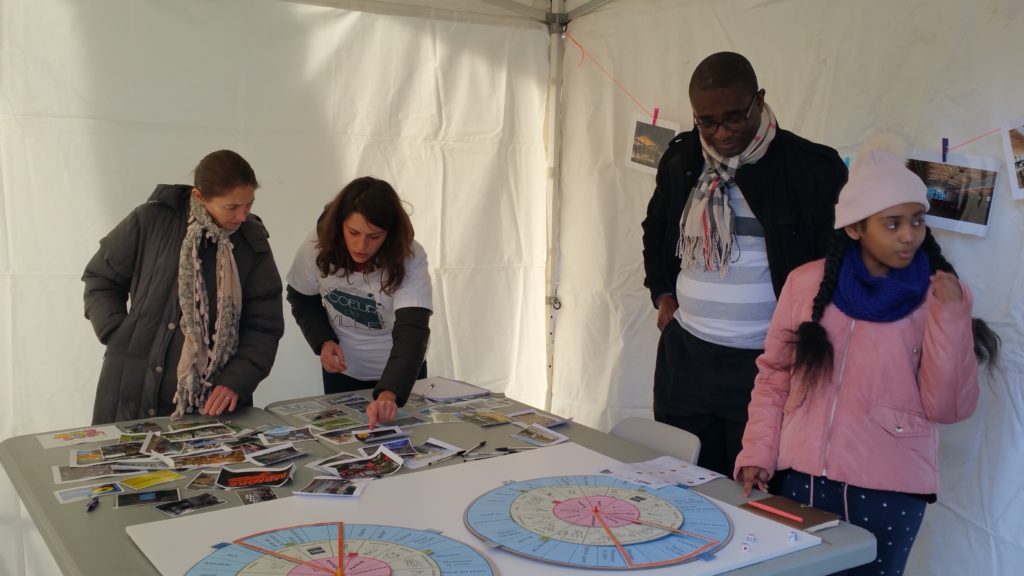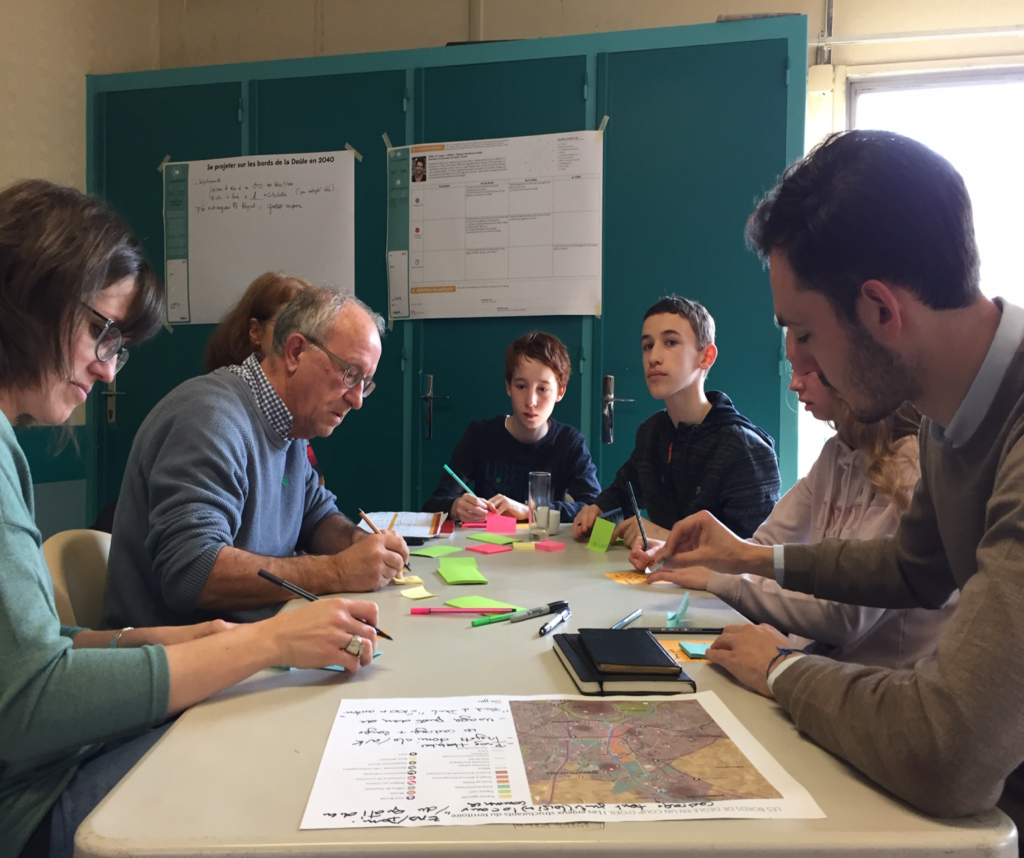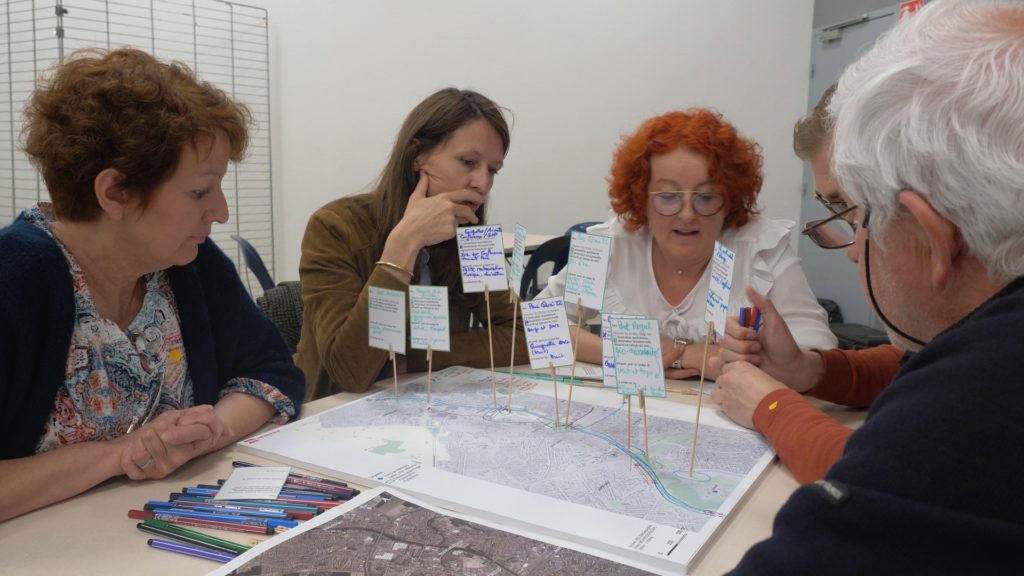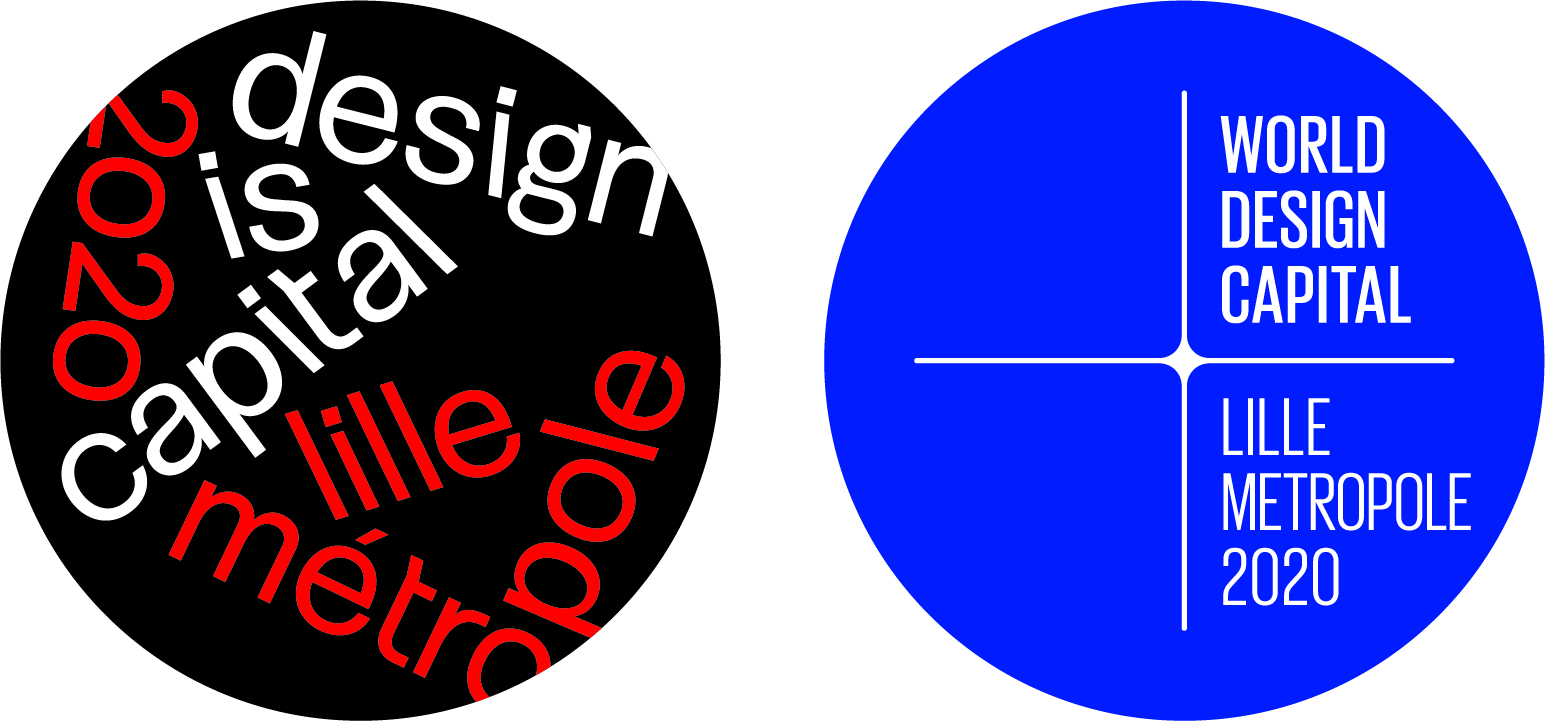Cléa Cochelin and Jade Hourman
The co-construction of a vision for the territory, an inclusive approach to living better together
While traditional urban planning is often unadapted to citizens’ expectations, design methods are a way to rethink the fabric of territory. Various stakeholders are involved in a process of co-construction, in order to share a common vision of a desired future for the territory.
According to the Observatory of emerging uses of the city, 75% of French people would like to have the opportunity to become more involved in major decisions regarding their neighbourhood or municipality (data: November 2017). Who has not already walked by close to home and discovered new urban developments that would have an impact on their habits? These developments do not always correspond with the vision we might have of the space. In any case, according to the Observatory’s figures, three quarters of the French population would have liked to take part in the thinking of the evolution of their territory!
Since the model of representative democracy is in crisis, the way territorial policies are crafted is being questioned. Major urban planning projects have been cancelled in past years due to strong citizen opposition, who did not want the transformations to take place. Traditionally, politicians and experts are in charge of developing a vision for the territory and citizens only get partial information about what is going to happen. Yet they are the first to be concerned by these urban transformations and are quite often more aware of the territory’s social complexities. Within this context, it seems essential to think the city for and with its inhabitants. But is it really possible to co-construct a vision of the territory on a very large scale and with a very large number of stakeholders? First of all, it is highly recommended! Politics are unable to produce a vision of society over a long period of time since the electoral agenda forms an obstacle in building a coherent vision. In the face of this, it only seems legitimate that the citizens are the ones to think about the future and the society in which next generations will evolve. Reflecting on territorial issues that affect our daily lives has become especially urgent today as our environment is under threat. Producing a vision of the territory means giving everyone the ability to create the right conditions to live serenely. If a 20-, 30- or 40-year perspective may seem very long, it can quickly become interesting since it is also a way of giving meaning to our present actions.
The word “collaboration” comes from the Latin cum laborareor “to work with”. The collective dimension is therefore inherent. This idea of collaboration in the development of public policies upsets the
“administrative matrix”, where the makers of public policies are elected members and experts, leaving ordinary citizens to a passive role. Co-construction overturns the prevailing top-down planning approach and replaces it with a bottom-up, experimental approach. Citizens are the main affected by public policies, giving them a certain expertise of use, which, combined with the legitimacy of elected representatives within the framework of representative democracy, are best adapted for the socio-spatial singularities of the territory. The idea is to have multidisciplinary teams working together (elected officials, experts, citizens, etc.) to come up with concrete improvements to issues. These teams re-examine the classic mechanisms of public action to propose new processes and tools to co-construct a common vision of the territory.
The first step in any development project is to develop a vision for the territory. To identify the needs of users, they need to be involved since the start. Co-construction gives a place and recognition to citizens’ knowledge. There is no asymmetry of role between the “expert subject” (the elected representative) and the “naive user” (the ordinary citizen). Everyone is put on an equal footing. Design methods provide tools for local authorities to organise this co-construction. The “trial and error” approach is used to valorise controversy and error as a means of exploration and learning. Thought-out solutions must be pragmatic. The “Bords de Deule 2040” project set up workshops of 5 people from different backgrounds, and participants had to consider the needs of 8 user profiles (a cyclist, a family, an entrepreneur, etc). These workshops help to create a “collective intelligence”, wherein each participant brings their knowledge and skills to define the best solution adapted to the uses. In the end, 180 solutions were proposed, broken down into 5 strategic intentions, serving as values to initiate the transition of the territory.
The goal of co-constructing a vision for the territory is to design concrete projects. The project Cœurde ville de la Madeleineis a good example. Thanks to the development of a suggestion box, it was possible to start the renovation project for the market square. For 5 months, citizens were asked to share their vision of the square they want for the future (through public surveys in the field, online questionnaires, meetings with identified stakeholders, etc.). An urban planning firm was then commissioned to imagine three distinct development projects, taking into account the inhabitants’ ideas. In a second phase of consultation, the inhabitants voted for their favourite project. The relevance of this approach is to encourage communication between the diverse stakeholders and to develop a shared understanding of the issues at stake.

Cœur de Ville de la Madeleine is a co-construction project with the inhabitants to rehabilitate the market square. Innovative actions were put in place: souvenir box, interactive poster with different questions every month, construction of models by schoolchildren, etc.
There were 3 steps in the project:
– Phase 1 of the consultation: identification of needs by users through multiple workshops to determine their vision of the future market place.
– Prototyping of 3 distinct development projects by a service provider.
– Phase 2 of the consultation: citizen vote, and “The Link” project was chosen.

Workshop example – Projecting for the edges of Deûle 2040
In practice, the co-constructive elaboration of a vision of the territory is often complex. Creating a collaboration that is sufficiently inclusive can be really challenging, especially when it involves mobilising a very large number of stakeholders. The public is often quite homogeneous and already politicised. As Christine Bellavoine and Elsa Blondel write in an article for the magazine Participation in 2019, the working-class is not very present in these co-construction mechanisms. Moreover, there is often prejudice and suspicion about these mechanisms as they are organised by “decision-makers”. However, it is precisely this meeting between heterogeneous actors that offers an opportunity to build a sustainable vision of the territory. In order to create a wider panel of actors, thought has to be put in the way citizens are solicited. Indeed, this has a real impact on the constituted profile of participants, some groups of people being in fact excluded (for example, people who are not comfortable with technology cannot participate in digital solicitations). Diversifying the ways people are solicited is one way to get around this bias (sending emails, publishing on social networks, door-to-door, mail, etc.). In the case of the Bords de Deule 2040 project, participants were chosen arbitrarily. The people identified were solicited by email.
Although this community brings together various profiles (elected municipal officials, local residents’ collectives, property developers, experts, economic players, associations, shopkeepers), it should be expanded further, in order to include more citizens. For this to work, there must be effective communication and a certain transparency about the actions being carried out. In the Madeleine project, the profile of the participants in phase 2 of the consultation was unknown (voting was done through Internet and was anonymous). However, it would be interesting to have more visibility on this data: did the solicited public in phase 1 participate again, or did the public renew itself? Co-constructing a vision of the territory takes time! The aim of this process is to perpetuate the collaboration, keeping participants involved over time. In the Bords de Deule project, each participant was part of the same community. The advantage is the generation of a sense of belonging to a group that brings about change. However, for the interest of the community members to be sustained, it is essential to solicit them on a regular basis. Stakeholders must feel that they have a real role to play, and that their participation is essential. It is essential to limit idle time in these projects that are carried over a long term.

The aim of the Bord de Deule project is to co-construct a vision for this territory by 2040. Highly appreciated since very attractive, 6,000 housing units and more could be built there, which would mean a doubling of the population. In order to have more than just developers as actors in this territory transformation, about fifteen groups, each made up of 5 stakeholders, thought about the needs and expectations of 8 user profiles. The purpose of these workshops was to stimulate debate and compare viewpoints on user problems.
Any foresight exercise is complex since it is difficult to project into a faraway future. Spatial planning is a process extended over many years, the first stage of which is the definition of a vision, with operational solutions meeting citizen needs. For this vision to be coherent, it is essential that a very large number of stakeholders are involved in the project, to create a dynamic of creative co-production. Conducting this collaboration on a very large scale implies mobilising even more stakeholders. New technologies, and in particular digital technologies, are indispensable tools for meeting this challenge.
Finally, it is important to remember that the co-construction of a vision of the territory is an iterative process. At each stage, lessons can be learned to continuously improve the process. Regular reviews are necessary to always consider new forms of actor mobilisation. Building the city together is a way of rethinking the representative democracy now in crisis, by putting citizens back at the centre of the decisions.
